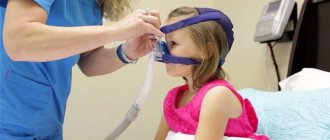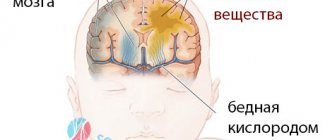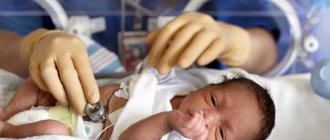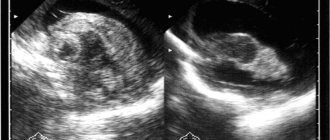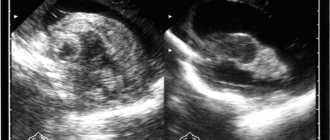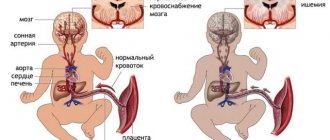Meningitis in children is an acute infectious disease in which inflammation of the membranes of the brain and spinal cord develops. Children's meningitis is severe. If antimicrobial therapy is not started in a timely manner or is inadequate, severe complications develop in children with meningitis. The Yusupov Hospital has all the conditions for the treatment of meningitis:
- the wards are equipped with forced-air ventilation and air conditioning;
- patients are provided with individual personal hygiene products and dietary nutrition;
- Patients are examined using devices from leading global manufacturers and modern laboratory diagnostic methods;
- Doctors use the latest generation antibacterial and antiviral drugs, which are highly effective and have minimal side effects.
Severe cases of meningitis are discussed at a meeting of the expert council with the participation of candidates and doctors of medical sciences. Leading specialists in the field of treatment of infectious diseases of the central nervous system make a collegial decision regarding the management of patients with severe meningitis. The clinic accepts patients aged 18+.
Causes of meningitis in children
Children's meningitis can be primary (develop without previous signs of a pathological process caused by the corresponding pathogen) or secondary, when damage to the meninges is preceded by other manifestations of infection (mumps, measles, leptospirosis).
The following microorganisms can cause meningitis:
- bacteria (pneumococcus, meningococcus, Haemophilus influenzae and tuberculosis bacilli, spirochetes);
- viruses (enteroviruses of the Coxsackie-ECHO group, mumps and measles virus);
- chlamydia;
- mycoplasma;
- protozoa;
- mushrooms.
Meningitis most often affects children who belong to the following risk groups:
- premature;
- those born with intrauterine fetal hypoxia or as a result of difficult labor;
- with congenital or acquired immunodeficiency;
- who have undergone craniocerebral, spinal, vertebral trauma, neurosurgical operations and surgical interventions on the abdominal organs.
Children under 5 years of age are more likely to get meningitis. The risk of getting meningitis increases in children who attend preschool institutions and schoolchildren. Children who do not follow the rules of personal hygiene, swallow contaminated water when swimming in reservoirs, and eat food contaminated with rodent excrement are more likely to get sick. The causative agents of meningitis are transmitted by ixodid ticks.
There is a high risk of developing meningitis in children who have not been vaccinated against mumps, measles and rubella, or who have missed vaccinations with Haemophilus influenzae, meningococcus, or pneumococcal conjugate vaccines. When traveling to places dangerous for meningitis, children must be vaccinated no later than 2 weeks before the child’s departure.
The source of pathogens of childhood meningitis are sick people or bacteria carriers. Infectious agents can be transmitted by airborne droplets (with dust and saliva particles), contact (through dirty hands), waterborne, transmissible (through insect bites) and fecal-oral mechanisms. The entry points for infection are the mucous membranes of the upper respiratory tract and digestive organs. The causative agents of meningitis spread throughout the body in the following ways:
- hematogenous (through blood vessels);
- lymphogenous (lymph flow);
- geirogenic (with cerebrospinal fluid).
Meningitis in children is accompanied by the following pathological changes:
- increased production of cerebrospinal fluid;
- increased intracranial pressure and permeability of the blood-brain barrier;
- toxic damage to the brain substance;
- disorders of cerebral circulation, especially microcirculation;
- liquorodynamic disorder;
- hypoxia (insufficient oxygen supply) of the brain.
Eventually, swelling of the brain tissue develops. This is facilitated by the spread of the inflammatory process to the ventricles and brain matter, which is characteristic of purulent meningitis. With viral meningitis, cerebral edema is less pronounced, but the medulla is also involved in the pathological process. When the inflammatory process spreads to the brain, focal neurological symptoms appear.
Edema and swelling of the brain leads to its displacement with compression of the brain stem by the cerebellar tonsils. At the same time, the function of vital organs, especially breathing, is disrupted in children, which can lead to death. After suffering viral meningitis, most children do not develop complications. Children who have had bacterial meningitis may be retarded in mental development, and they sometimes develop impaired vision and hearing to the point of complete deafness.
Vaccination schedule
It is important to check with your pediatrician at what age your child should be vaccinated against a particular infection. Thus, vaccinations against meningococcus, depending on the specific drug, can be administered from 9 months, one and a half or 2 years.
The vaccine against hemophilus influenzae is administered simultaneously with DTP, and, accordingly, the number of times the vaccine against tetanus, diphtheria and whooping cough is given, the same number of times the anti-hemophilus component is administered. It is possible to carry out separate vaccinations according to an individual schedule.
Frequently ill children, especially those with recurrent bronchitis, are vaccinated against pneumococcal infection from two months of age. The vaccine can be administered up to 5 years of age; after 4 consecutive injections, lifelong protection is provided. There are drugs that are administered from 2 years of age, they provide protection against meningitis with other complications. It is important to remember how long the vaccine lasts. It protects for up to 10 years.
Symptoms of meningitis in children
The clinical picture of meningitis in children depends on the type of pathogen. In all cases of childhood meningitis, general symptoms predominate, which are united by the concept of “meningeal” syndrome. Meningitis in children often begins acutely rather than gradually. Typically, the symptoms of meningitis are preceded by general signs of an infectious disease: fever, weakness, pain in the joints and muscles. With meningococcal infection, hemorrhagic rashes appear in children, with pneumococcal infection - signs of rhinitis, pneumonia, otitis, with mumps - damage to the salivary glands, with enterovirus infection - dyspeptic disorders and catarrhal phenomena.
Meningeal syndrome has the following symptoms:
- rigidity or stiffness of the neck muscles due to a pathological increase in their tone;
- Kernig's symptom - the patient is unable to fully straighten a previously bent leg at a right angle at the knee and hip joints;
- Brudzinski's symptom: upper - when the patient tilts his head to the chin and lies on his back, the lower limbs automatically bend, lower - if the patient bends one leg at the knee joint, the second limb bends automatically;
- hyperesthesia – increased sensitivity to painful, auditory, olfactory and tactile stimuli, intolerance to bright light;
- local complete or partial paralysis.
Children develop the following signs of meningitis:
- Lesage's symptom - when the baby is taken by the armpits, he presses his legs to his tummy, which cannot be straightened (typical for children under one year old);
- “tripod” symptom – a child, sitting on a flat surface with his legs extended forward, bends his legs or leans back;
- bulging fontanelle;
- Filatov's symptom - when the baby tilts his head quickly or sharply, his pupils dilate.
In children under three years of age, it is extremely rare to have all the signs of meningeal syndrome. Symptoms of meningitis in children 7-8 years old do not differ from signs of the disease in adults. The temperature during meningitis in children rises to 41-42o. Children are bothered by a severe headache that spreads throughout the head. They cry, sometimes screaming.
From the first days of the disease, small dark cherry pinpoint rashes appear on the child’s body. In the presence of severe meningococcal infection, the elements of the hemorrhagic rash merge, and large spots or bruises may appear. The child's consciousness is impaired, convulsions and epileptic seizures develop. Children are worried about nausea, continuous vomiting, not associated with food intake, which does not bring relief.
Features of vaccination
Today, vaccinations are available against three types of meningitis – pneumococcal, Haemophilus influenzae or meningococcal. Each infection has its own characteristics of immunization.
Haemophilus influenzae infection. Some cases of Haemophilus influenzae infection lead to the development of meningitis, especially between the ages of birth and 6-7 years, when the immune system is still imperfect and may not fight the microbe as effectively. The effectiveness of vaccination against meningitis caused by Haemophilus influenzae reaches 95%. Repeated booster vaccinations increase immune protection.
Pneumococcal infection. Vaccination against meningitis caused by pneumococcus is especially important for children under two years of age. Microbes entering the body of children can provoke various manifestations - from colds to damage to the lungs (pneumonia) and the membranes of the brain. Vaccination reduces the risk of disease by 80%. If the baby is sick, the infection is easier. Source: A.A. Baranov, L.S. Namazova-Baranova, N.I. Briko, Yu.V. Lobzin, R.S. Kozlov, M.P. Kostinov, I.S. Koroleva, A.V. Rudakova, S.V. Sidorenko, V.K. Tatochenko, S.R. Kharit, M.V. Fedoseenko, E.A. Vishneva, L.R. Selimzyanova. Vaccinal prevention of pneumococcal infection in children // Pediatric pharmacology, 2021, v. 15, no. 3, p. 200-211.
Meningococcal infection. Most often, meningitis of this nature occurs in children in the first year of life. In addition, the infection is dangerous for weakened and frequently ill children. Having meningitis can lead to disability, so it is important to vaccinate your baby. When vaccinated, the risks are reduced by more than 90%. Source: A.A. Ergalieva, L.B. Seidulaeva, R.Zh. Baykhozhaeva, L.A. Umeshova. Meningoccal meningitis // National priorities of Russia, 2013, No. 2(9), special issue, pp. 154-156
Diagnosis of meningitis in children
Decisive for confirming the diagnosis of meningitis in children is the examination of cerebrospinal fluid. It is obtained by lumbar puncture. According to indications, children undergo additional studies:
- radiography of the skull and paranasal sinuses;
- fundus examination;
- electroencephalography;
- echo-encephalography;
- computer and nuclear magnetic resonance tomography.
During a spinal puncture, the pressure of the cerebrospinal fluid, the visual characteristics of the cerebrospinal fluid (color, transparency) are determined, and the cerebrospinal fluid dynamic tests of Stuckey and Queckenstedt are performed. In the liquid sediment, the number and composition of cells and the presence of microorganisms are determined. Biochemical (glucose, protein, chloride content, sediment samples) and microbiological studies are carried out.
With meningococcal meningitis in children, the cerebrospinal fluid is cloudy, yellowish or milky white. One milliliter of cerebrospinal fluid contains several thousand neutrophils. Characteristic bean-shaped diplococci are often visible in their cytoplasm. When sowing, a culture of the pathogen is isolated. An increased amount of protein and a decreased level of glucose are detected in the cerebrospinal fluid. Using immunological methods, the pathogen's antigen is detected in the cerebrospinal fluid, and its DNA is detected using the polymerase chain reaction. Signs of a pronounced inflammatory process are detected in the blood.
With pneumococcal meningitis in children, meningeal syndrome is detected somewhat later than with meningococcal infection. Even if the child is hospitalized early, the disease progresses rapidly. Disorders of consciousness, convulsions, and often paresis of cranial nerves or partial paralysis of half the body appear early. The cerebrospinal fluid is purulent. In it, under a microscope, extracellularly located lanceolate-shaped diplococci are visible.
Meningitis caused by Haemophilus influenzae is most often observed in children under one year of age. The disease can begin either acutely or gradually. Meningeal symptoms appear on days 2–5 of illness. In children under one year of age, the most serious signs of meningitis are regurgitation or vomiting, bulging and cessation of pulsation of the fontanel, and an unmotivated high-pitched cry.
Viral meningitis is preceded by a clinical picture characteristic of the corresponding infection. Symptoms of meningitis appear later. With viral meningitis, body temperature rises to moderate numbers, meningeal symptoms appear on the 2-3 or 5-7 seventh day from the onset of the disease. Children are bothered by an intense headache, which goes away after a diagnostic lumbar puncture and evacuation of a small amount of cerebrospinal fluid.
Post-vaccination complications
Post-vaccination complications are very rare. On average, with a frequency of 1 in several hundred thousand children who received the vaccine. Severe complications – 1 in several million.
Complications after vaccination are divided into several large groups:
- Reaction to vaccine components. Such reactions include:
- development of an acute allergic reaction: Quincke's edema, urticaria, anaphylactic shock. Most often, these conditions occur without consequences, provided that assistance is provided in a timely and correct manner;
- a piercing scream. Occurs more often after DPT. 2-8 hours after vaccination, the child cries loudly, turning to squealing, for about 3 hours. This is a very unpleasant complication for parents, but it does not threaten the baby in any way.
- severe muscle weakness that goes away on its own. Occurs approximately 1-3 hours after vaccination.
- Reactions due to the quality of the vaccine. This includes changes that arise as a result of violations of the conditions of production, storage, and transportation of vaccines. When using such vaccinations, the following may occur:
— loss of vaccine activity (immunity is not formed);
- increased risk of severe local reactions;
- acute inflammatory changes (abscesses or phlegmon). This happens when the sterility of the drug is violated.
- Reactions caused by violation of the rules of drug administration. This reaction is typical for the BCG vaccine. If it is administered incorrectly intramuscularly, or subcutaneously, and not intradermally, an abscess may develop. When the vaccine is administered into the gluteal muscle, instead of the tibialis or deltoid, the risk of injury to the sciatic nerve and the development of inflammation of the subcutaneous fatty tissue increases. If antiseptic rules are violated, acute local or general inflammation may develop. It happens that vaccines intended for oral administration are administered by injection. This threatens with pronounced local or general reactions.
- Diseases caused by vaccination. Such complications, most likely, would have developed in the baby later, regardless of the vaccination, caused by other factors. For example, a past infection.
These include: arthritis, thrombocytopenic purpura, autoimmune diseases, immunodeficiency conditions. Separately, it is worth saying that in children with immunodeficiencies, the introduction of a vaccine can provoke the development of severe conditions: vaccine-associated poliomyelitis, BCG osteomyelitis, the development of a generalized BCG infection, vaccine-associated encephalitis, meningitis. However, all these complications are rare, even in children with immunodeficiencies. You need to understand that in this group of children, any infectious disease will have much more pronounced consequences than vaccination against them. Therefore, for children with immunodeficiencies, vaccinations are not completely canceled, but are carried out with caution, according to an individual calendar and taking into account the child’s condition.
